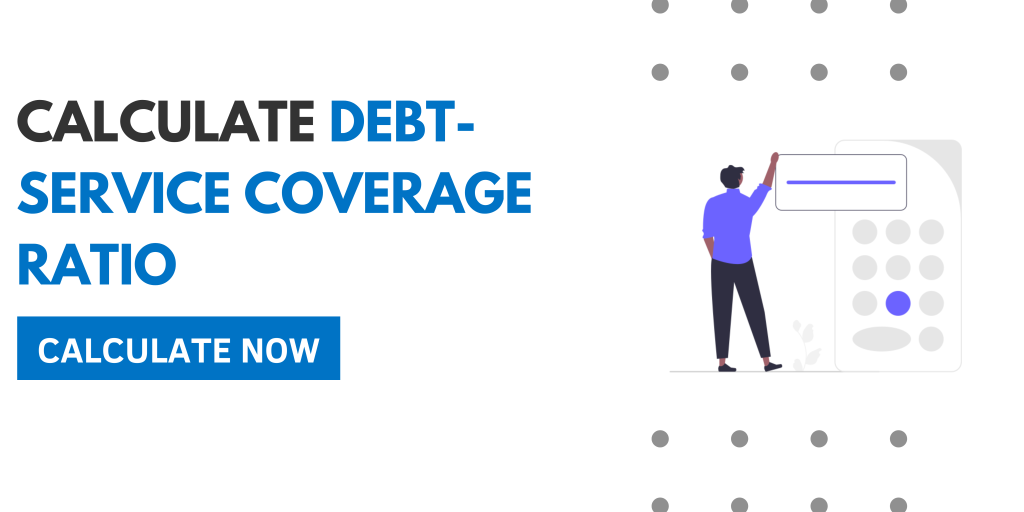When it comes to business and finance, there are a lot of acronyms and terms that can be confusing. One such term is “Debt-Service Coverage Ratio,” or DSCR.
This article will explain DSCR, how to calculate it, and why it’s essential. Then, stay tuned for more financial jargon busting!
The Context Of Corporate Finance: Its Connection to DSCR
Corporate finance is a vital tool for businesses of all shapes and sizes. Its practice is mainly devoted to understanding the relationship between risk and potential return on investments.
One of the most important metrics in corporate finance is Debt Service Coverage Ratio (DSCR), which measures the cash available to pay off debt obligations. The calculation takes into account such areas as operating expenses, capital investments, debt levels, and earnings before interest and taxes.
A higher DSCR is often viewed positively by lenders as it can result in lower rates or more significant amounts given through loans. On the other hand, borrowers should understand that their company’s financial health must remain sound to maintain acceptable DSCRs; otherwise, they may be penalized through increased borrowing costs or even restricted access to financing sources altogether.
What is the Debt-Service Coverage Ratio (DSCR)?
The debt-Service Coverage Ratio (DSCR) measures a borrower’s ability to repay debt obligations. It is calculated by dividing the detailed cash flow (before income taxes and interest expense) by the recurring debts (debt payments).
The resulting number gives you an indication of how much cash reserves are available for debt repayment. In other words, DSCR indicates a borrower’s fiscal health and ability to pay off debts. It helps lenders determine whether or not to extend credit, as it reflects the overall financial performance of the borrower.
How To Calculate Debt-Service Coverage Ratio
The Formula For Calculating DSCR Is Relatively Straightforward
DSCR = (Net Operating Income + Non-Cash Expenses) ÷ (Principal Payments + Interest Payments )
Net Operating Income
The company’s total operating income. It includes revenues minus all expenses except for depreciation and amortization.
NOI is used to measure the profitability of a property and can help determine the Debt-Service Coverage Ratio (DSCR). It measures the difference between the number of debt payments required to manage a property and the net operating income to determine whether sufficient money is available for those payments.
Non-Cash Expenses
Non-cash expenses are not paid using cash, such as depreciation or amortization. In other words, these expenses lower a company’s Debt-Service Coverage Ratio (DSCR), which is determined by finding the net operating income and dividing it by the annual debt service.
Understanding the effects of non-cash expenses on a company’s DSCR is essential for ensuring it can meet its debt obligations. It also helps analysts understand how effectively a company manages its finances and whether there is room for additional borrowing capacity for its debt payments.
Principal Payments
Principal payments represent a large portion of a loan repayment, where borrowers can repay their borrowing with fixed payments over time. This loan repayment style helps ensure borrowers’ affordability, making cash flow more predictable and manageable.
In addition, those who make their principal and interest payments on time will find that they can pay less interest by reducing their total loan balance. Principal payments also provide equity to homeowners, which helps them build an asset or net worth over time.
Interest Payments
The total interest owed on all debt obligations. Interest payments are typically calculated using the principal balance, interest rate, and loan term.
Interest payments impact a borrower’s Debt-Service Coverage Ratio (DSCR), as they consume a large portion of cash flows and limit available assets to pay off debt obligations. Therefore, companies should be aware of their total interest costs to maintain an acceptable DSCR.
Once you have these figures, plug them into the formula above to arrive at your company’s DSCR. By understanding the components of their Debt-Service Coverage Ratio (DSCR), borrowers can gain a clearer picture of their financial health and take steps to ensure they can meet their debt obligations.
Why Is Debt-Service Coverage Ratio Important?
Measure The Creditworthiness
The debt-service coverage ratio (DSCR) determines an individual or organization’s creditworthiness. Calculating by dividing a borrower’s annual cash flow by its total debt burden gives lenders an insight into the borrower’s capacity to service current and future debts.
When trying to determine the creditworthiness of an individual or business, there are a few key measures to keep in mind. First, review the past credit history.
It includes any outstanding debt and repayment obligations and whether these have been paid in full with no delinquencies. Second, consider an individual’s overall income level–this can indicate their ability to pay principal and interest obligations in the future.
Finally, pay attention to other factors such as current employment status and financial commitments. These combined elements can give you a good sense of someone’s capability and willingness to handle additional credit responsibilities.
Shows Sufficient Surplus Cash Flow To Pay Off Debts
A good DSCR shows sufficient surplus cash flow to pay off debts owed in total, making a borrower less risky to potential lenders and more likely to receive financing. Conversely, if the ratio is too low, lenders may become hesitant about providing capital and would be more prone to demand higher interest rates or additional types of collateral.
Companies can use their resources more efficiently by having an adequate amount saved to make payments. Not only does this lead to higher profits over time, but it also allows for the careful selection of investments and other methods to maximize those profits.
Furthermore, having enough money put aside for debt repayment also puts a significant strain on the management team; instead of spending valuable hours every month determining where funds will come from, they can focus more on growing their business and creating additional value for shareholders.
It assures Lenders Of Repaying Debts
Ultimately, the DSCR gives lenders an idea of how dependable and secure a borrower will be at repaying liabilities on time, allowing for informed decisions regarding investing in or lending money. Repaying debt can sometimes be challenging, especially for borrowers with poor credit scores.
However, it is essential to remember that lenders want to be assured of the annual mortgage payment before they extend a loan or other type of credit. It is the responsibility of borrowers to prove they are capable and willing to repay the debts they incur.
It can be done by making realistic annual debt payments on time and demonstrating responsible financial behavior over time. Lenders look for these signals as assurance that respondents are reliable and have the funds available to make timely payments when necessary.
Rest assured, if borrowers demonstrate their ability to pay back the money with good timing, there is absolute security in building a solid credit history and guaranteeing debt will not become unmanageable.

The Bottom Line
A debt-service coverage ratio is an essential tool for both lenders and borrowers. It helps lenders gauge a borrower’s creditworthiness while providing borrowers with the opportunity to show they are reliable and responsible when it comes to debt repayment.
By paying attention to this metric, both sides can rest assured that loans will be fulfilled according to the agreed-upon terms and that money can be used effectively and efficiently.
Ultimately, it is up to the borrower to ensure they have enough cash flow to repay their liabilities comfortably. Therefore, it is also important for lenders to consider additional metrics when determining creditworthiness rather than relying solely on this ratio when making credit decisions.
By taking the proper steps and calculating the DSCR correctly, lenders can make an informed decision about whether to provide capital, and borrowers can show they are reliable regarding debt repayment. It can be beneficial for both parties in the long run.
FAQs
What are debt service reserve account and their relevance to DSCR?
A debt service reserve account is a type of savings account used to help make monthly payments if they cannot generate the funds independently. Lenders need to include this factor in the DSCR calculation, as it can give them an idea of how capable a borrower will be of repayment.
Is lease payments necessary in the debt-service coverage ratio?
Yes, lease payments are necessary when calculating the debt-service coverage ratio. A lease is a type of loan and should be included in the calculation to accurately assess the borrower’s ability to make payments on time.
Is there a company’s ability to cover its debt service?
Yes, a company’s ability to cover its debt service is indicated by the DSCR. This ratio measures the number of funds a company generates from operations relative to how much it pays out in debt obligations.
A high DSCR indicates that the company has sufficient cash flow to meet its financial obligations, while a low DSCR indicates the opposite. It is important to use this metric correctly when assessing a company’s financial health.



